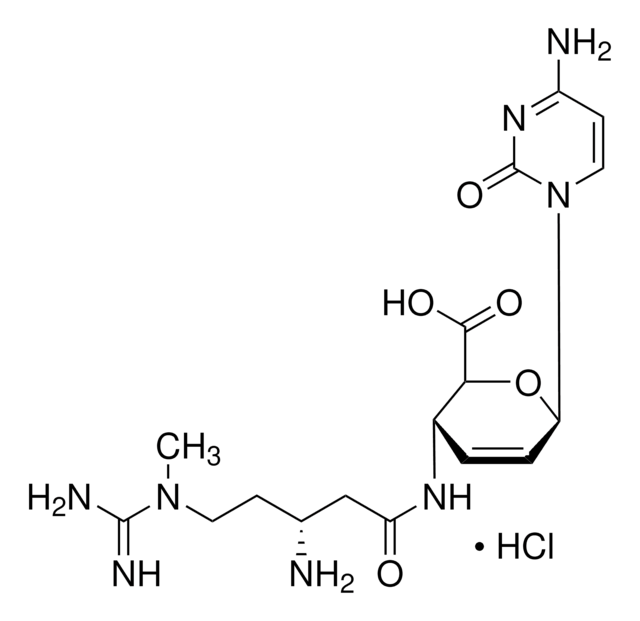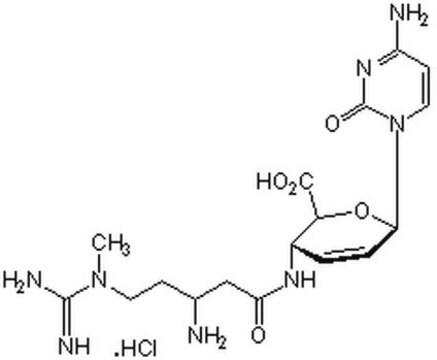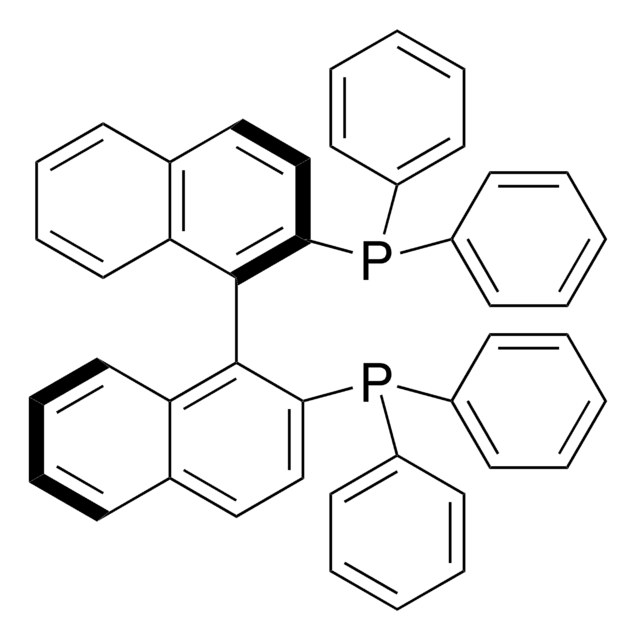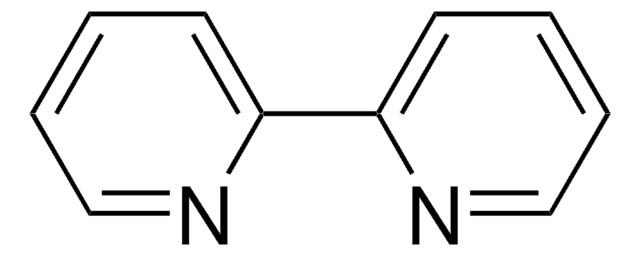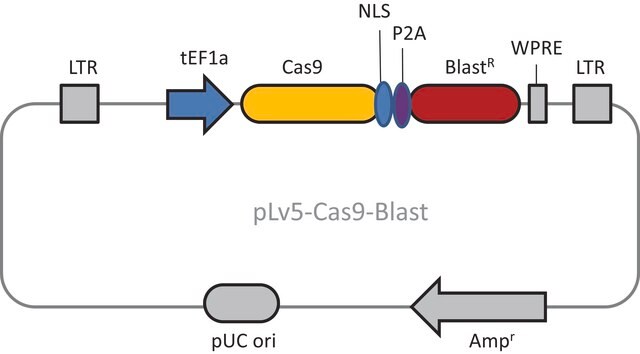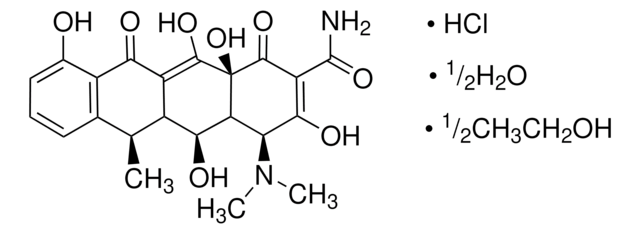推荐产品
形狀
powder
品質等級
顏色
white to off-white
溶解度
acetic acid: water: soluble, clear, colorless
抗生素活性譜
fungi
應用
agriculture
environmental
作用方式
protein synthesis | interferes
運輸包裝
dry ice
儲存溫度
−20°C
SMILES 字串
Cl[H].CN(CC[C@@H](N)CC(=O)N[C@H]1C=C[C@@H](O[C@@H]1C(O)=O)N2C=CC(N)=NC2=O)C(N)=N
InChI
1S/C17H26N8O5.ClH/c1-24(16(20)21)6-4-9(18)8-12(26)22-10-2-3-13(30-14(10)15(27)28)25-7-5-11(19)23-17(25)29;/h2-3,5,7,9-10,13-14H,4,6,8,18H2,1H3,(H3,20,21)(H,22,26)(H,27,28)(H2,19,23,29);1H/t9-,10+,13-,14+;/m1./s1
InChI 密鑰
YQXYQOXRCNEATG-ZAYJLJTISA-N
一般說明
應用
生化/生理作用
包裝
其他說明
相關產品
訊號詞
Danger
危險聲明
危險分類
Acute Tox. 1 Oral
儲存類別代碼
6.1A - Combustible acute toxic Cat. 1 and 2 / very toxic hazardous materials
水污染物質分類(WGK)
WGK 2
閃點(°F)
Not applicable
閃點(°C)
Not applicable
個人防護裝備
Eyeshields, Faceshields, Gloves, type P3 (EN 143) respirator cartridges
其他客户在看
商品
Our lentiviral vector systems are developed with enhanced safety features. Numerous precautions are in place in the design of our lentiviruses to prevent replication. Good handling practices are a must.
Successful targeting relies on optimizing key sensitive steps in the process, including lentiviral transduction. Below are some helpful handling and titration tips from our R&D lentiviral experts.
实验方案
You are not alone designing successful CRISPR, RNAi, and ORF experiments. Sigma-Aldrich was the first company to commercially offer lentivirus versions of targeted genome modification technologies and has the expertise and commitment to support new generations of scientists.
FACS (Fluorescence-Activated Cell Sorting) provides a method for sorting a mixed population of cells into two or more groups, one cell at a time, based on the specific light scattering and fluorescence of each cell. This method provides fast, objective, and quantitative recording of fluorescent signals from individual cells.
我们的科学家团队拥有各种研究领域经验,包括生命科学、材料科学、化学合成、色谱、分析及许多其他领域.
联系技术服务部门